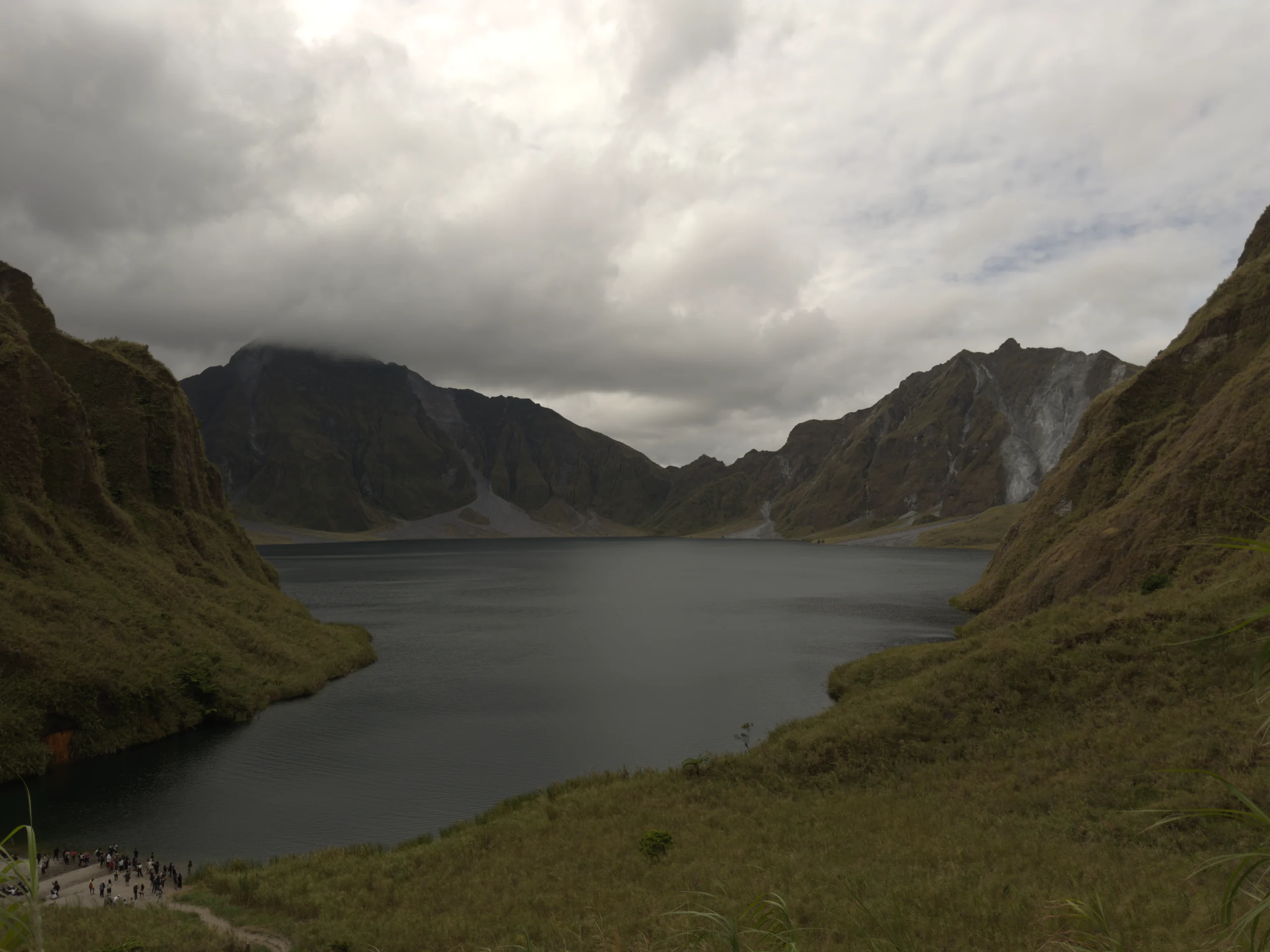Hiking to Mt. Pinatubo Crater Lake: My Beginner-Friendly Adventure
I finally got the chance to tick off one of my dream adventures, hiking to Mt. Pinatubo’s crater lake. I’ve seen countless photos online, but nothing really compares to seeing it in person. It was a mix of adventure, a little challenge, and an experience that left me in awe.
Orientation and Local Guide Requirement
Before starting the trip, we had a short orientation at the jump-off area. The briefing covered safety reminders, the trail conditions, and what to expect during the hike. One thing I learned is that having a local Aeta guide is mandatory for all visitors. I actually appreciated this because it not only ensures safety but also supports the local community who know the mountain best.
At the jump-off, there were also some practical things for sale like walking canes to help during the hike and face masks since the trail passes through lahar fields, which can get dusty. I found that really convenient, especially for first-time hikers who didn’t bring these along.
A Stop at Toblerone Hills
On the way to the actual drop-off point for the hike, we passed by the famous Toblerone Hills. These triangular-shaped lahar hills really looked like the chocolate bar they’re named after. It was a nice quick stop for photos and added an extra highlight before the real adventure began.
The Thrilling 4×4 Jeep Ride
From there, we hopped back on our 4×4 jeep and continued across lahar fields. Honestly, it felt like being in an off-road rally, dusty trails, streams, and rocky paths stretching out as far as the eye could see. The bumpy ride wasn’t the most comfortable, but it was definitely exciting and made me feel like the trip had truly begun.
The Hike to the Crater
After about an hour of the 4×4 ride, we reached the jump-off point for the trek. The Mt. Pinatubo hike itself took around an hour, which was surprisingly manageable. It wasn’t too steep or intimidating, making it a good hike for beginners. Along the trail, there were streams to cross and rocky paths to walk on, but overall, it was more enjoyable than exhausting.
Food Stalls Along the Trail
One thing I didn’t expect was seeing food stalls run by the Aetas, the indigenous people living in the area. They sold snacks, drinks, and even some souvenirs. Prices were a bit higher than usual, but considering the location, I’d say it was reasonable. Plus, it felt good to support the locals while enjoying the trek.
Finally Reaching the Crater Lake
When we finally reached the top, the view of the Mt. Pinatubo crater lake was just breathtaking. The water was this striking turquoise-blue, surrounded by steep cliffs that looked like they were protecting it. It’s crazy to think that this peaceful, picture-perfect spot was formed by one of the most destructive volcanic eruptions in history. Sitting there, I felt both amazed and humbled by nature’s power.
What to Bring and Other Essentials
If you’re planning a hike to Mt. Pinatubo, it’s best to come prepared. Here are some essentials that really help make the trip more comfortable:
Water and snacks – Even though there are food stalls along the trail, it’s still best to carry your own.
Face mask or scarf – The 4×4 ride passes through dusty lahar fields, so a mask helps a lot.
Walking cane – Available for purchase at the jump-off point; handy if you need extra support on rocky parts of the trail.
Hat, sunglasses, and sunscreen – The trail is mostly exposed, and the sun can be harsh.
Comfortable shoes or sandals with good grip – You’ll be crossing streams and uneven ground, so wear something sturdy.
Extra cash – For food stalls, souvenirs, or even using the basic (bare) paid toilets along the hike. They’re simple and not the most comfortable, but they get the job done if you really need them.
Packing light is key, but having these essentials will make the adventure much smoother.
FAQs About Hiking Mt. Pinatubo
How much does a Mt. Pinatubo tour cost?
Prices vary depending on the package, but a day tour usually ranges from ₱2,500 to ₱4,000 per person. Most packages include roundtrip van transportation from Manila to Zambales, the 4×4 ride, local Aeta guide, and permits. Take note that lunch is not included, so it’s best to pack your own food or buy snacks along the trail.
Do you need a guide for the hike?
Yes. A local Aeta guide is mandatory for all hikers. It ensures safety and also supports the indigenous community.
How long is the hike to Mt. Pinatubo crater?
The trek takes about 1 hour on foot, making it perfect for beginners or those who don’t want a super intense hike.
What’s the best time to visit Mt. Pinatubo?
The best time is during the dry season (November to May). Trips are usually canceled during heavy rains or typhoons for safety reasons.
Are there toilets along the trail?
Yes, but only basic paid toilets are available at certain points. Don’t expect comfort, but they’re useful if you need them.
My Takeaway
Overall, my trip to Mt. Pinatubo was worth every bump, step, and bead of sweat. The orientation and having an Aeta guide made me feel safe, the 4×4 jeep ride was an adventure on its own, the hike was short and beginner-friendly, and the crater lake at the end was the perfect reward.
If you’re looking for an adventure that’s not too hard but still leaves you with amazing views and stories to tell, I’d definitely recommend doing a Mt. Pinatubo hike.

